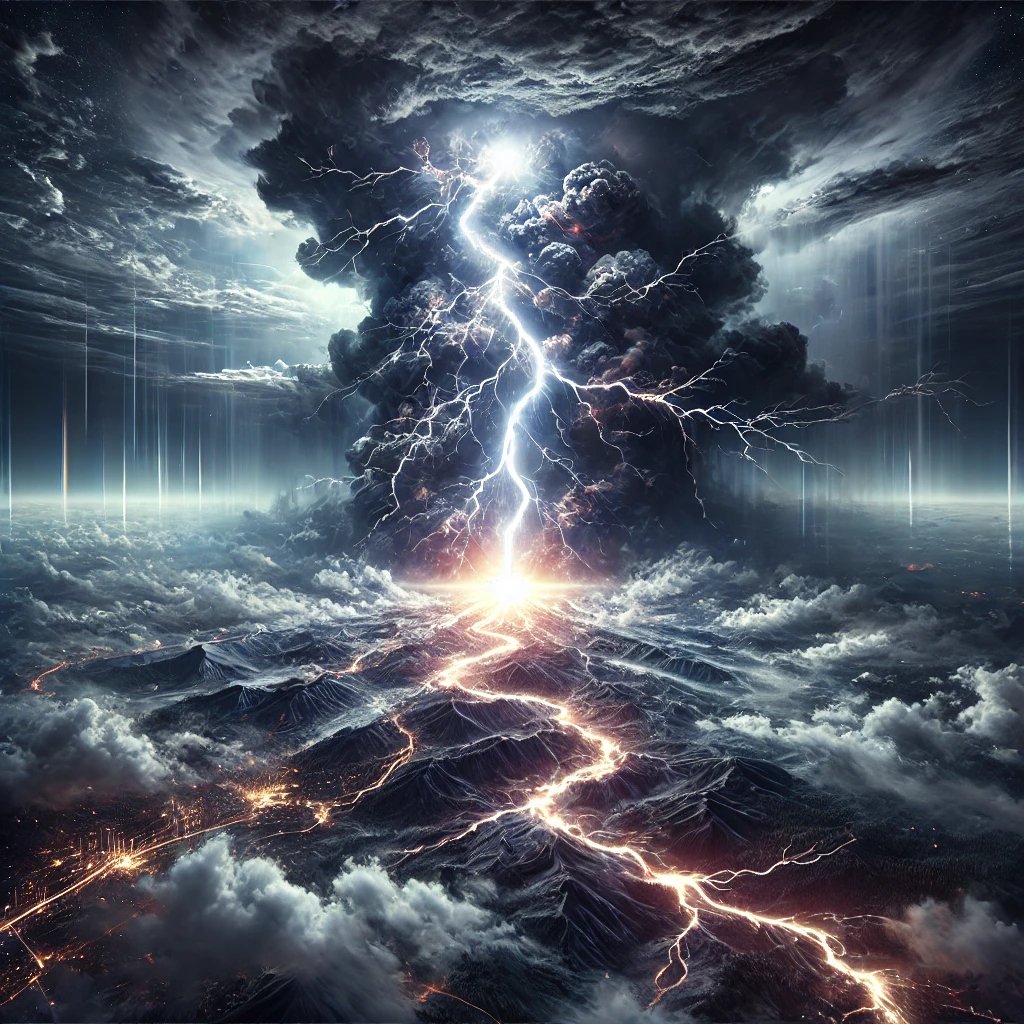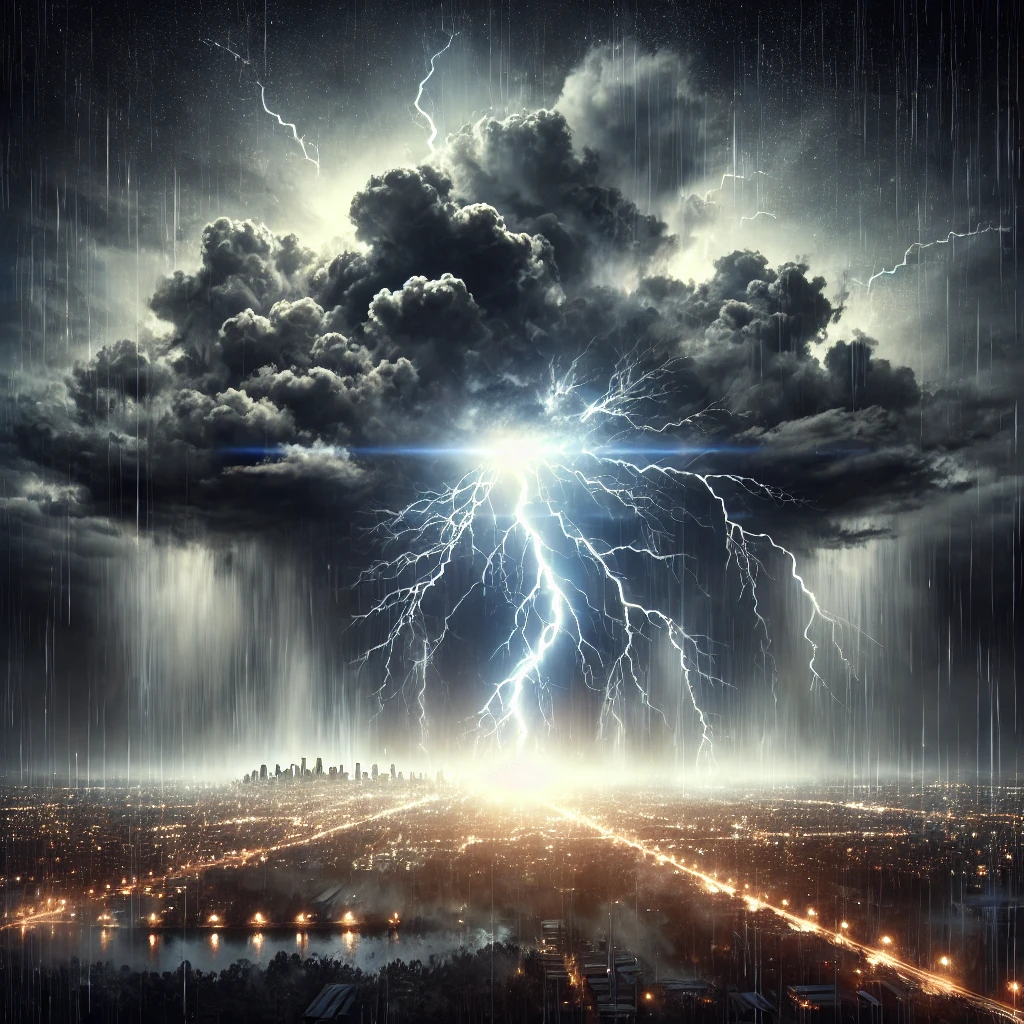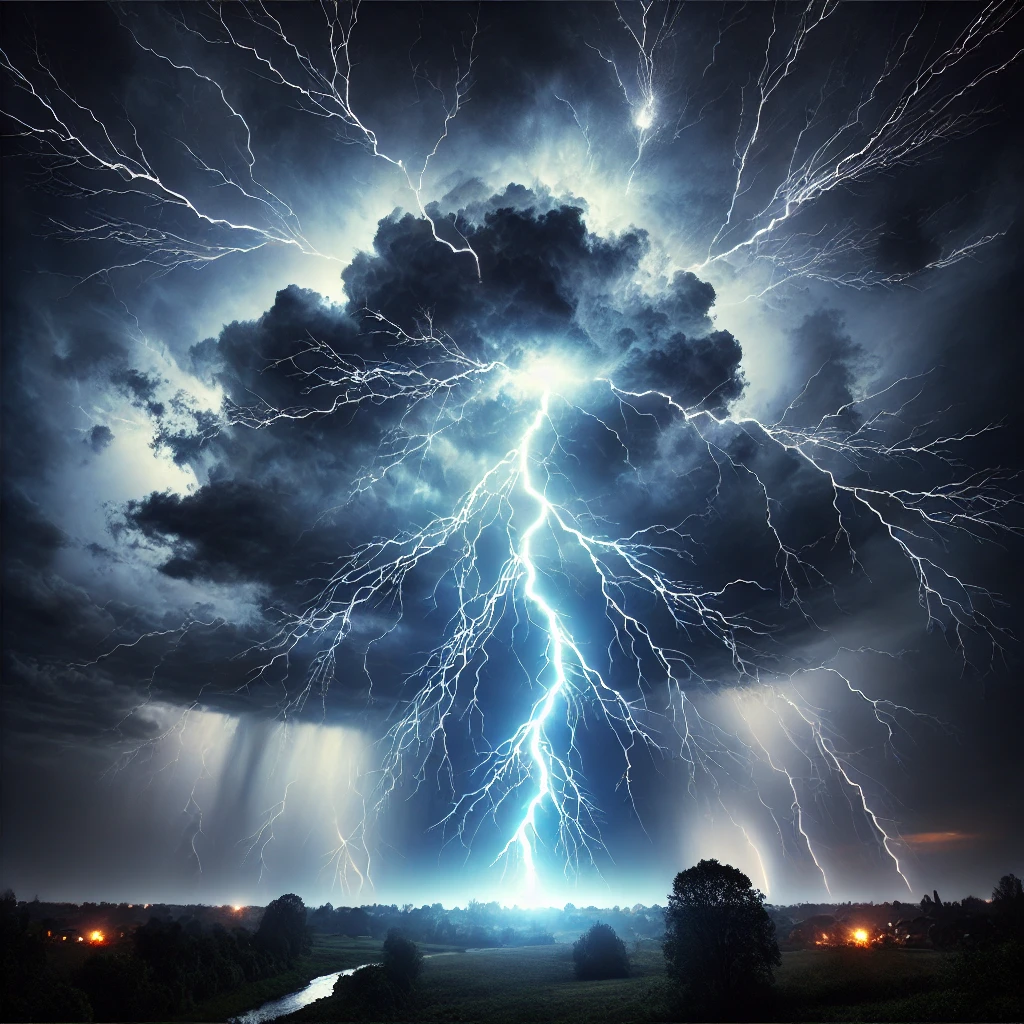Lightning is an extremely powerful force of nature that is both marvelous and scary. It occurs in thunderstorms and other similar extreme weather situations. It is a natural event, which for ages, has been not only naturally fascinating but also frightening in some ways. Though knowledge of it improves our security as storms attack, its bright flashes along with thunderous roars have had great interest in humankind’s curiosity all these years.
- It is the sudden discharge of electricity from a thunderstorm.
- It warms up air which rapidly expands and produces a thunderous sound.
- The phenomenon appears everywhere on Earth but with an intensity depending upon the weather.
- It can hit any place, be it ground, buildings, trees, or humans.
- How to protect yourself from lightning is greatly important during stormy weather.
| GS Paper | GS Paper I, GS Paper III |
| Topics for UPSC Prelims | Basics of Lightning formation, Different types of lightning, Safety measures during lightning strikes, Effects of lightning on the environment, |
| Topics for UPSC Mains | Mechanism and causes of lightning, Impact of lightning on human life and property, Role of topography in lightning occurrence, Government initiatives for lightning safety and awareness |
What is Lightning?
Lighting is an intense electrical discharge that happens in a thunderstorm. Electrical charges build up in storm clouds and then discharged in the cloud as opposite charges, positive and negative collide. The interaction of these oppositely charged entities creates an electric current powerful enough to release its potential in energy through bright flashes, intense heat, and a sound wave created from the sudden heating, which we refer to as thunder.
Friction is produced by the rapid movement of droplets of water, ice crystals, and air inside the storm cloud. This friction produces electrical charges that create it. Most of the time, the process is very fast, within milliseconds. The lights from the it during the storms shoot through many times, making it a spectacular yet dangerous view.

How Does Lightning Develop?
Lightning develops as a result of combining all factors in the atmosphere. Within storm clouds, water droplets, ice, and air move rapidly with updrafts and downdrafts. These collisions separate the charges in a cloud. The entire process happens incredibly fast. When it hits, it creates a blinding flash and immediate heat blast. The temperature from its strikes can be as high as 30,000 Kelvin. The sudden heating causes the air around the cloud to expand rapidly, and the sound is thunder .
Charge Separation
In a storm cloud, falling water droplets and ice particles collide. Due to friction caused by this collision of droplets and ice, charges separate; positives move to the top and negatives collect in a cloud down on the bottom, creating the necessary electric field for it.
Development of Electric Field
Since the charge separation within the cloud is strong, it develops a very intense electric field. In turn, this intensity drives such influence on the surrounding atmosphere that pushes the electrons and creates a pathway. The driving force of the electric potential difference between the cloud and the ground now launches it.
Breakdown of Insulating Air
Normally, air is an insulator that prevents the discharge of electrical energy. However, the electric field reaches a potency that it ionizes the surrounding air and thus collapses its insulating properties. This breaking creates a conductive path through which the electrical energy can travel and hence causes a lightning strike.
Formation of Lightning Bolt
Once the insulating air is broken, a stream of electrons flows from the cloud to the ground. This stream creates a visible path called a “step leader.” When it makes contact with the opposite charges on the ground, a huge electrical current flows through, creating a bright bolt.
Formation of Thunder
When the bolt occurs, it heats the surrounding air to extremely high temperatures. This rapid heating causes the air to expand explosively producing a shock wave which we hear as thunder. This process of lightning and thunder occurs within a fraction of a second.

Types of Lightning
In actuality, it has different kinds of depending on where and how they come during the storm. Each type has different characteristics that affect the sky and the ground. Knowing the types can help one recognize the possible threats and impacts of it. Lightning takes on various forms of light depending on the conditions of the storm. The most common types are:
Cloud-to-Ground Lightning
This type occurs when the electrical discharge from the cloud hits the earth directly. It is the most dangerous type since it may strike buildings, trees, or people. It causes much destruction while storms are raining and leads to fires and injuries as well as even deaths due to its extremely high voltage.
Intra-Cloud Lightning
This is the most common type, occurs inside of a single cloud. This type produces bright flashes called “sheet lightning,” lighting up the sky but not reaching the ground. Intra-cloud lightning occurs because of movement of electrical charges between the different parts of the same storm cloud.
Cloud-to-Cloud Lightning
It is lightning that strikes between two separate clouds. This is a brilliant visual display in the sky but rarely touches the ground. In itself, this particular type of lightning is less dangerous to people and structures, but it does indicate to you that there is serious electrical activity going on in the atmosphere with a strong and active storm.
Heat Lightning
Visible on warm, humid nights, heat lightning is the distant glow of a storm’s lightning that is too far away for its thunder to be heard. Although no direct threat, its presence does warn of an active thunderstorm possibly moving into the area, and cautions are needed.
Ball Lightning
An extremely and mysterious form, ball lightning is a glowing, floating sphere coming across an area covered with thunderstorm. These balls of varying sizes and colors appear in the air for a few seconds or minutes. Its causes unknown, it can sometimes become dangerous because it has a senseless erratic movement.

What Causes Lightning?
This natural phenomenon is basically due to the electrical charges in stormy clouds. These charges develop due to the persistent movement of air, water droplets and ice particles within the clouds. The primary factors behind the formation of it include the following:
Charge Separation in Clouds
Inside storm clouds, updrafts and downdrafts violently rub water droplets and ice against air. The process causes segregation of electrical charges, with positive charges on the top and negative charges on the bottom. This process gives rise to an electric discharge.
Updrafts and Downdrafts
Storm clouds are made up of rising and falling currents of air. Air currents increase further the separation of positive and negative charges in the cloud. Concentration of charge increases electric tension to a lightning flash.
Positive Ground Charges
At the bottom of the storm cloud, the negative charges induce positive charge at ground level. The electric potential between the cloud and the ground increases until it exceeds the insulating effect of air, which then breaks down through an electric discharge to form a lightning bolt.
Electric Breakdown of Air
Under normal conditions, air is an insulator, hence no electrical discharge occurs. However, when the electric field established between the cloud and ground becomes so strong, then its insulating property will break down. That is how the breakdown creates a conductive path wherein its strikes.
Rapid Movement of Ice and Water Particles
Recurring collision of water droplets, ice particles, and hailstones in the cloud produces static electricity. When friction is exerted among these particles, electrons are transferred, which increases the negative charges in the cloud and seek to neutralize them by the discharge through the its stroke.

Effects of Lightning
Lightning has natural and human impacts. Though powerful lightning has its destructive nature, it also has a good impact in nature. It contributes much to the Earth’s electrical balance and contributes some power to the nitrogen cycle by breaking the molecules of nitrogen that are available in the atmosphere. Its energy can lead to destructive outcomes:
- Wildfires: Lightning can start fires in the forests leading to heavy destruction in the natural habitats.
- Structural Damage: Lightning strike leads to damage buildings, trees, and electrical systems.
- Electromagnetic Effects: Lightning may disrupt electric and communication facilities that can cause electric supply interruption and communication loss.
Precautions while Lightning
Lightning is a dangerous phenomenon and can cause major injury or even death. In this regard, the employees need to take safety precautions while thunderstorm approaches. Here’s how you can protect yourselves
Seek shelter indoors
- While it strikes, a precautionary measure of seeking shelter inside a safe building should be considered.
- You should not come in contact with electricity from household appliances, cords, or plumbing.
- Stay away from windows, doors, and porches to limit the chances of being hit by stray strikes.
Avoid Open Grounds
- If you are outside then avoid standing in open fields, hilltops or solitary trees.
- It follows the tallest thing in the landscape; do not become the tallest thing.
- Avoid those open grounds and solitary trees during it.
- Do not go near hilltops because it typically strikes the highest thing.
- Do not stand near water bodies; water is known to conduct it strikes.
Avoid Water Bodies
- Water is an excellent conductor of electricity.
- Avoid swimming, boating, or fishing during a storm to avoid being hit by it.
- Do not use sinks, taps and showers during it storms.
- Never swim in pools, lakes or oceans when there is thunder.
- Avoid wet surfaces which can conduct electricity perfectly.
Use the 30-30 Rule
- After seeing lightning count to 30 before hearing thunder.
- Take cover if you hear thunder before completing the count to 30.
- Wait for 30 minutes before going outside after the last clap of thunder.
- This would significantly cut down the chances of any risk related to thunderstorms and lightning.
Conclusion
Light is a natural feature that is beautiful and dangerous. Knowing the causes of lightning and how it is formed may help in taking proper precautions. Safety measures during lightning, while storms occur, are quite imperative to keep away from harm. While power itself is awesome, it must be respected. In the first place, educating oneself about thunderstorms can understand and appreciate its beauty to stay safe.
| Lightning UPSC Notes |
| 1. Lightning is a natural electrical discharge caused by imbalances between storm clouds and the ground or within clouds. 2. During lightning, a high-energy electric charge travels between different areas, heating the air and creating a bright flash. 3. Thunderstorms, volcanic eruptions, and wildfires can all generate lightning due to rapid air movements causing electrical imbalances. 4. Lightning strikes are extremely hot, reaching temperatures of up to 30,000 Kelvin, much hotter than the sun’s surface. 5. Lightning plays a key role in the nitrogen cycle by breaking atmospheric nitrogen molecules, making them usable for plants. 6. Lightning strikes pose risks to human life, infrastructure, and forests, causing fires and extensive damage. 7. Measures like lightning rods and storm shelters are crucial for minimizing the damage and casualties from lightning strikes. |



